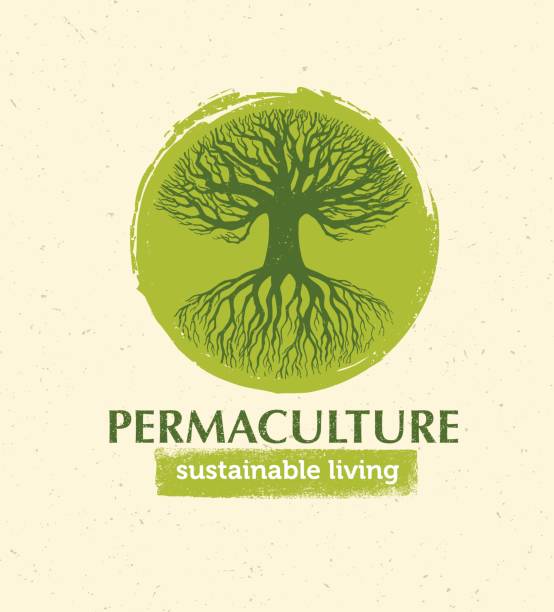You’ve Heard of Permaculture But What the Heck Is It?
There are many benefits to this sustainable design system, but what exactly does it entail? For starters, it lacks a strong emphasis on native plants, or a particular landbase. It also lacks a sense of place and bioregional subsistence.
Sustainable design system
Permaculture is a practical design system that helps create highly productive environments. It integrates water catchment, energy and shelter systems and helps people live off the land. In addition, it is also a means to help regenerate natural systems. It can be used in urban and rural settings.
Permaculture uses ecological principles, appropriate technologies, and community development to create a system that is ecologically sound, economically viable, and doesn’t pollute. It teaches people how to create natural homes, abundant food production systems, and how to regenerate degraded landscapes. The system is based on a concept of symbiotic relationships between plants, animals, and humans.
Permaculture is a worldwide movement that is dedicated to sustainable design. People in different places and countries are using the permaculture design system to organise their lives and make small changes that are positive for the environment and society. Their actions will influence wider systems and appropriate technologies and create a movement to create a sustainable future.
The permaculture design principles are a universal set of design principles that can be applied to any location, climate, or culture. These principles enable people to live off the land in the most efficient way possible while simultaneously supporting their needs and those of the planet. In addition, they can be applied to any type of agricultural, human, and animal system.
Ecological methods of production
Permaculture is a way of creating sustainable agricultural systems by incorporating natural resources into a productive system. This method reduces labor requirements, turns wastes into resources, and optimizes yields while restoring environments. The practice emphasizes the importance of community in the overall system. Many urban areas today are out of balance with their natural environment, resulting in resource deficiencies and extreme pollution.
The permaculture literature stresses the importance of land use diversity and the integration of different production systems. It also emphasizes the importance of agroecosystem configuration and an integrated water management system. This has been proven to be effective in improving labor efficiency. By integrating many enterprises, agroecosystems can produce more food, with less input.
The permaculture literature emphasizes functional relationships between component parts, the self-organization of systems, and the practices of species selection. The approach also focuses on biodiversity conservation, ensuring that each component has an equal share of resources. This practice is a great way to ensure the long-term health of the permaculture system.
The permaculture movement aims to disseminate its distinctive worldview to new participants. It does this by establishing networks and small institutes.
Empty space
The use of empty space in a permaculture design can be a positive force in the landscape. Plants do not like empty space and permaculture uses it as an opportunity to maximize planting space per square foot. For example, rather than planting rows of plants, keyhole gardens allow more planting space per square foot. In addition, hanging pots are another great option for growing vegetables.
In addition to the benefits of using empty space, permaculture is also better for the environment. Traditionally, gardeners have looked at gardens in terms of aesthetics and functionality, rather than as living systems. As such, the empty space is an area that can be utilized by plants to help improve the soil.
Flexibility
Flexibility in permaculture design means considering the land’s natural patterns and materials. This practice begins with observation, mimicking natural systems on a site and considering such details as human paths, topography, type of trees, and leaf fall. In addition, it incorporates existing patterns and materials.
There are many different permaculture principles, but they all have similar concepts. These are outlined below, and they are drawn from Bill Mollison’s introduction to permaculture (1997) and David Holmgren’s Principles and Pathways Beyond Sustainability (2002). Many permaculture practitioners strive to incorporate each principle into their design. In addition, some give examples of how they have successfully incorporated each principle into their design.
Flexibility in permaculture is crucial because the design must change with the land. Permaculture is based on the idea that nature is a living thing that never stands still. So permaculture designs need to be able to respond to these changes in order to maximize their benefits. This means using natural changes in a garden as an opportunity to introduce new elements that are more suited for that particular situation. This principle is known as ecological succession. Fast-growing trees are introduced to a garden to provide nitrogen. Eventually, food trees will replace them.
Flexibility in permaculture involves learning the design skills necessary to successfully implement a permaculture design. Those who are not familiar with permaculture design may be interested in learning this approach to create a more harmonious environment.
Value of traditional knowledge
The use of traditional knowledge in permaculture is an important part of the design process. Traditional knowledge can help create sustainable systems that are easier to maintain and adapt to changes in climate. It also helps us understand the relationships between the different parts of a permaculture system.
Permaculture uses creative design processes and whole systems thinking. It considers the interaction of different materials, energy flows and other factors. It also considers downstream and long-term effects of natural systems and the interaction between humans and other animals. The resulting designs take into account all of these elements.
Permaculture is based on ecological methods of production. It includes agroforestry, contour planting, Keyline agriculture, composting, and polyculture. It can be applied to urban and rural settings, single households, whole farms, and villages. It is also sometimes referred to as integrated farming or ecological engineering, depending on the specifics of the context.
Permaculture draws on traditional knowledge from various parts of the world. It emphasizes the principles of caring for the earth and creating harmonious relationships between plants, animals, and humans. Permaculture also incorporates the values and ethics of earth care and involves the use of appropriate technology. In addition, permaculture practices involve community development.
Ethics
There are a number of ethical principles involved in permaculture. Generally, the principles focus on sharing resources and reducing waste. Permaculture rejects the industrial growth model of the global North and strives to create a more sustainable system that is fair and equitable. The ethics of permaculture are not as rigid as some other ethical principles and are more like codes of behavior.
The three main ethics of permaculture are Earth Care, People Care, and Fair Shares. These principles are not unique to permaculture, and were drawn from common worldviews. These principles are shared by many people around the world. The permaculture approach, however, makes them explicit, integrating them into everyday life and transforming thinking into action. In doing so, these principles promote ecological transformation.
As a result, the ethics of permaculture are also related to the principles of sustainable living. While the permaculture principles focus on the design of living landscapes, ethics are not about ignoring natural laws. They are rooted in indigenous and non-industrial cultures and emphasize earth care, people care, and fair share. These principles are connected by a spiritual reverence for nature.
In addition to the ethical principles that underlie permaculture, ethics have a broad range of applications. These principles have been found in many traditional cultures throughout the world. They are culturally evolved mechanisms that regulate self-interest and help humans understand the difference between good and bad outcomes. As the human population increases, ethics become even more important for our survival.














